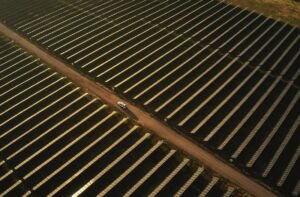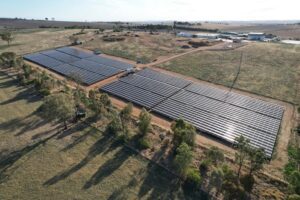US chemical manufacturer DuPont is predicting that commercial and residential solar PV will reach grid parity on a global scale by 2015. It says that in many markets with rich sun resources and high grid electricity prices, parity has already been achieved.
The head of the company’s electronics and communications division, David Miller, says DuPont supplies a range of materials used in solar PV, including resins, metallisation pastes and films that are designed to increase the lifetime and efficiency of solar modules, and reduce overall system costs. It is the largest supplier of materials to the PV market, apart from silicon.
Its sales to the industry totaled $1.4 billion and it expects this to rise to $2 billion by 2014, with the industry posting 20 per cent average annual growth in installations after 2012, as PV reaches grid parity in more markets.
“We expect that global photovoltaics markets will, on average, achieve grid parity by 2015,” Miller told a conference in New York last week.
His presentation included a couple of interesting graphs. One was this below, which shows how the unsubsidised cost of PV will beat grid-based energy in coming years. Note that this is an average cost for the US, combining sun-rich states and those with not so much sun. Parity has already been achieved in states such as California.
The second interesting graph is this one highlighting how attractive PV investments have been for investors, which migeeht explain why company’s such as Warren Buffet’s MidAmerican Energy, Google, and other institutional investors have been kn to invest in utility-scale projects.
The third graph highlights the penetration of solar in individual country markets. Most analysts expect China, the US, Japan and India to be the big growth drivers of the market in coming years.
And here’s the fourth graph. Interestingly, DuPont expects the German market to remain steady on its boom 2011 year, with only Italy dropping sharply and other markets showing solid growth.
Miller said the cost of photovoltaic energy is a function of the lifetime and efficiency of solar cells and modules, and said metallisation paste plays a central role in efficient conduction of the electricity generated by PV cells and its fluoride films for the backsheet of photovoltaic modules is the only material proven to enable photovoltaic modules to perform in the field for the 25-plus years that investors require to achieve their expected returns on photovoltaic systems.
“The systems being installed today will be around for at least a generation so the quality of what they are made from really matters,” said Miller. “DuPont has supplied materials to the photovoltaic industry since its inception, and we continue to invest substantial resources in delivering proven materials that reduce photovoltaic electricity cost.”












